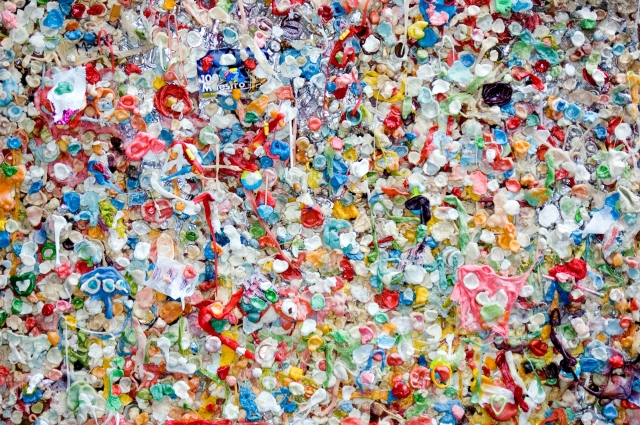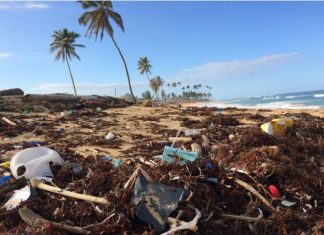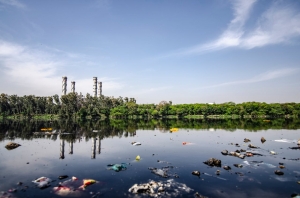Recycling Plastic is dissolving and mixing many types of plastics used with other raw materials, through a set of basic processes for producing plastic granules or powder to be molded and shaped to suit the purpose used for them. All in order to obtain new products of good quality, and these products may be completely different from the old product, for example, plastic bags and shopping bags may be recycled to enter the manufacture of carpets and panels, and recycling plastic beverage bottles to enter the manufacture of wool jackets, on the other hand, the same product may be produced again and called closed-loop recycling, just like recycling an old bottle to a new bottle.
1. Why recycling plastic?
In a world increasingly prone to climate change, pollution, and environmental destruction, it is only natural to seek suitable solutions to curb this state of affairs. Recycling plastic waste is one of the most effective solutions to fight against environmental pollution. Indeed, plastic waste has great impacts on the health of populations, animal species, and protecting biodiversity in general. As an illustration, according to scientists, plastic waste buried in the ground takes about 100 years to degrade, which is very harmful to the environment. Thrown in nature, plastic waste can end up in one way or another in the sea and thus harm aquatic animals. These same plastics buried in the ground end up damaging crops, preventing them from extending their roots underground to find the minerals necessary for their development. Recycling, therefore, has several advantages, among which we can list:
- Reduction of pollution and ecological risks, because 1 ton of recycled plastic is equivalent to 800 kg of crude oil saved;
- Environmental protection, because there will be a less plastic waste.
- The protection of animal species in general and aquatic species in particular.
- Preservation of resources.
- Preservation of the ozone layer, because there will be less harmful materials.
2. Recycling plastic process
Recycling plastic requires a set of technical processes to transform a waste into a new secondary raw material with physical qualities identical to those of virgin PET plastic from petrochemicals.
2.1 Collecting plastics
The collection is a decisive step in the process of recycling plastic waste. It is carried out by simple plastic users who sort their plastic waste at home and deposit it in the bins or sorting containers provided for this purpose. These can be plastic bottles and flasks, plastic bags and films, or plastic jars or containers. However, some types of plastics are not recyclable, such as plastics that have contained extremely toxic substances or liquids, including insecticides and poisons. It is, therefore, advisable not to mix them with recyclable plastic waste. After this stage, a specialized sorting center will receive the plastics collected.
2.2 Sorting plastics
Sorting the plastic materials according to their types, either manually or by using advanced sorting machines that can identify the type of polymer by using advanced sensors that use infrared or X-rays, in addition to the ability of these machines to sort the plastic materials according to their colors. By discovering the color of the material through the sensors, these machines can also sort large quantities of plastic materials. The importance of this stage is due to the presence of types of plastics that are not suitable for reprocessing and thus removed.
2.3 Grinding and cleaning
At this stage, a machine will clean each plastic bales. This helps to get rid of all the impurities. Once cleaned, the plastics move to large capacity shredders where they are minutely crushed and shredded using rotating blades. Generally, after this phase, we obtain glitter of different colors. The result obtained is introduced into industrial washers for a second cleaning. During this cleaning, the plastics of the PET or HDPE type flow, those coming from the caps and lids, remain on the surface.
2.4 Drying and spinning
The materials extracted from the washers pass through the centrifuges, which, in addition to the drying functions, will completely remove all the impurities which could still have escaped from the washers.
2.5 Homogenization
After the drying step, the result is completely pure plastic. According to various precise technical processes, this set of plastics goes to a silo where it is going to be under very high temperatures. Heating continues until obtaining a uniform color, behavior, and texture. All this is under the instructions of the customers or the nature of the final objects to be manufactured on the basis of recycled plastic.
2.6 Granule
The plastic comes out of the head of the extruder in the form of monofilaments or wires which cool in contact with the water placed in the tank. The threads pass through the die where a rotating blade cuts them. This process allows us to obtain the appropriate grain or granule requested by our customers, adapted to their needs when purchasing granules.
2.7 Manufacturing
The r-PET granules return to the industrial circuit to be transformed, in particular, into new plastic products.
3. What are recyclable plastics?
There are two types of plastic:
PET: Polyethylene Terephthalate, in other words, transparent plastics, such as transparent or colored bottles.
HDPE: High-Density Polyethylene, generally opaque plastics (opaque plastic bottles, such as milk or detergent bottles).
Polyvinyl chloride plastic: This type is pure, strong, durable, and easy to fold, and it is commonly used in making juice boxes, adhesive tapes, and plastic tubes.
Low-Density Polyethylene Plastic: It is easy to handle, strong, durable, and flexible, is moisture-proof, and is commonly used in frozen food bags, frozen containers, and flexible box covers.
Other plastics like PVC, the plastic used in supermarket bags, etc. are not recycled because they cost too much. Instead, they are burned in incinerators to produce energy (energy recovery). By burning a plastic bag, you create enough energy to make a 60-watt light bulb shine for 10 minutes.
Recycling offers many savings
1 ton of recycled PET = 0.61 tons to of crude oil, 0.2 tons of natural gas, and 10.96 MWh of energy (i.e., 2.29 tons of CO2 equivalent avoided) saved.
1 ton of recycled HDPE = 0.51 tons of crude oil, 0.31 tons of natural gas, and 7.98 MWh of energy (i.e., 1.53 tons of CO2 equivalent avoided) saved.






